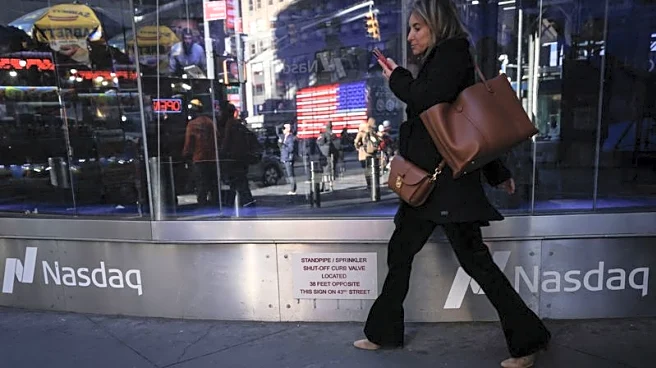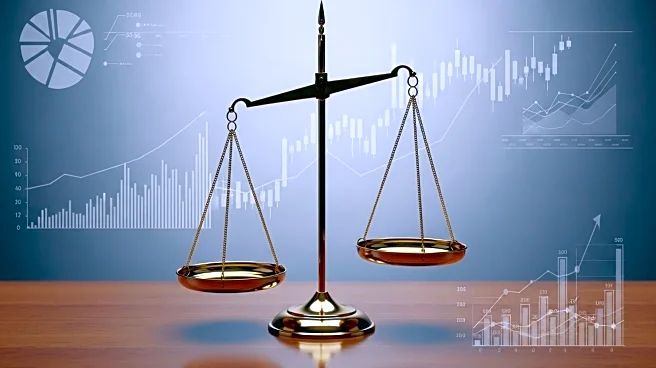What's Happening?
The financial sector is experiencing pressure due to dovish signals from the Federal Reserve and a selloff in tech-driven markets. The Federal Reserve's August 2025 meeting minutes revealed a fractured consensus, acknowledging risks to inflation and employment. Despite holding rates steady, there is an 87% probability of a rate cut at the September meeting, influenced by Powell's speech at Jackson Hole. This has led to a rally in the KBW Nasdaq Bank Index, as investors anticipate lower funding costs. However, internal dissent within the Fed highlights the fragility of this consensus. Concurrently, the tech sector has seen a selloff, marked by declines in the Nasdaq Composite and major stocks like Apple and Tesla, reflecting skepticism about AI-driven valuations. This has shifted capital flows towards defensive sectors like industrials and utilities.
Why It's Important?
The dovish stance of the Federal Reserve and the tech sector selloff are reshaping the risk landscape for financial stocks. Rate cuts could stabilize banks' funding costs but may compress net interest margins if the yield curve steepens. The tech selloff exposes vulnerabilities in the broader economy, including trade policy uncertainty and inflationary shocks, which could affect loan demand and increase credit risk for banks. Investors are rebalancing their portfolios, moving from high-growth tech to defensive sectors, impacting financial stocks caught between divergent macroeconomic signals. Banks with diversified revenue streams and strong capital buffers are better positioned to weather these challenges.
What's Next?
Investors must navigate this recalibration by balancing exposure to growth-oriented sectors with defensive positions. Monitoring the Fed's policy decisions is crucial, as rate cuts may offer short-term relief but persistent inflation and trade policy risks could limit long-term gains. The resilience of the broader economy in the face of stagflationary pressures will be key, as will the Fed's ability to manage its dual mandate effectively.
Beyond the Headlines
The interplay between policy uncertainty, sector volatility, and credit dynamics presents deeper implications for the financial sector. The Fed's internal dissent and the tech sector's volatility highlight the complexity of macroeconomic recalibration. Long-term shifts in investor sentiment and capital flows could redefine sector interdependence and risk profiles, necessitating strategic adjustments by financial institutions.












